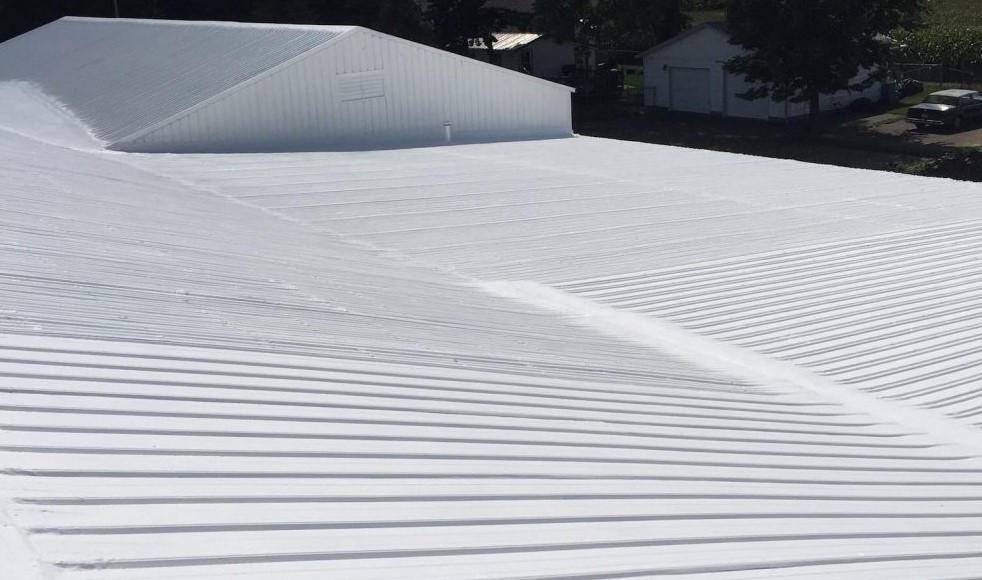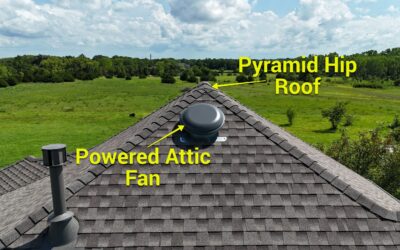Introduction
Managing a commercial property is about more than just keeping the lights on—it’s about maintaining functionality without sacrificing tenant satisfaction. Roofing projects are one of the most disruptive maintenance activities a building can face, but with the right plan in place, you can minimize downtime and keep tenants happy.
This guide covers everything you need to manage roofing projects effectively, including:
- Common commercial roof problems
- Managing large commercial roofing projects
- Best practices for commercial property management
- Minimizing roof replacement noise and tenant disruption
Let’s walk through how to take control of your next roofing project—without risking your leases.
1. Common commercial roof problems
Commercial roofs, especially flat and low-slope systems, are vulnerable to several recurring issues. These problems can develop gradually or appear after storms, poor maintenance, or aging.
Poor installation
Improper installation is one of the leading causes of early roof failure. If the system wasn’t sealed correctly or fastened according to manufacturer specs, problems can begin early in the roof’s life. Always choose certified contractors who specialize in commercial systems.
Leaks and water damage
Leaks are usually the result of seams pulling apart, ponding water, or deteriorated flashing. Water intrusion can damage ceilings, insulation, and tenant property—making timely repairs crucial.
Ponding water
When drainage systems are clogged or improperly designed, water can pool on the surface of flat roofs. Over time, this leads to membrane breakdown and increased leak risks.
Punctures and membrane damage
Heavy foot traffic from HVAC service crews, wind-blown debris, or dropped tools can easily puncture membranes. These small holes may go unnoticed until a leak forms weeks later.
Shrinkage
Certain membrane types like EPDM can shrink over time, pulling away from edges or flashings. This creates openings for water and air infiltration.
Flashing failure
Flashing protects vulnerable transitions on your roof—at edges, penetrations, and joints. Poor-quality flashing or improper installation can compromise the entire system.
UV and weathering damage
Over years of exposure to sun, snow, and rain, roofing materials begin to degrade. UV radiation, in particular, breaks down chemical bonds in membranes, causing brittleness.
Lack of maintenance
Deferred maintenance is a common problem in commercial property management. Without routine inspections and small repairs, minor issues often turn into major (and expensive) repairs.
See the full breakdown from Nations Roof.
2. Planning commercial roofing projects
Every successful roofing project begins with a clear plan. Whether you’re doing a full roof replacement or a section repair, it’s important to plan thoroughly to reduce disruptions and protect tenants.
Conduct a detailed inspection
Before beginning any project, inspect the entire roof system. Look for:
- Soft spots or blistering
- Cracked or damaged flashing
- Standing water or clogged drains
- Membrane deterioration
Document everything and involve your roofing contractor early. For larger properties, request a full condition report.
Build a scope of work
Your scope of work should align with your long-term property strategy. Ask:
- Does the entire roof need replacement, or can sections be repaired?
- Is this a capital improvement or part of a long-term budget?
- Will the work interfere with tenant operations?
For help identifying your roof’s lifespan and upgrade options, check out Rhoden Roofing’s commercial roofing services.
Schedule with tenants in mind
One of the biggest mistakes property owners make is not consulting their tenants about scheduling. Communicate project dates early and ask about:
- Operating hours
- Noise-sensitive operations
- Equipment or deliveries that may be impacted
If possible, schedule high-noise activities outside normal business hours or on weekends.

Set up site logistics
Make sure the project avoids unnecessary disruption:
- Use service elevators or exterior hoists
- Establish safe paths for contractors
- Clearly mark restricted zones
- Provide updates via email or posted notices
Rhoden Roofing coordinates closely with property managers to create a clear project plan that minimizes disruption.
3. Commercial property management strategies
Property managers wear many hats—and a roofing project puts extra pressure on tenant relationships. Here’s how to keep your tenants informed and your property protected during construction.
Conduct regular roof inspections
Make roof assessments part of your annual maintenance routine. A commercial roof should be inspected at least twice a year—ideally in spring and fall—and after major storms.
Inspection programs help you:
- Catch problems early
- Plan budget cycles effectively
- Keep insurance claims valid
- Extend the roof’s lifespan
For guidance, Rhoden Roofing offers free roof assessments to help property owners evaluate risk and prioritize repairs.
Create a roof maintenance schedule
Include regular:
- Gutter and drain cleaning
- Membrane inspections
- Minor flashing repairs
- Debris removal
Proactive maintenance is often the difference between a minor repair and a full replacement.
Communicate clearly with tenants
Roofing projects create noise, dust, and temporary access issues. Proactive communication is essential to avoid frustration.
Best practices:
- Notify tenants at least 2 weeks before work starts
- Share a schedule of noisy activities
- Designate a point of contact for tenant concerns
- Update tenants on project milestones
More tips available from Property Manager Insider.
Provide contingency plans
For properties with mission-critical tenants (like medical or data centers), work with them to create backup plans for power, HVAC interruptions, or limited access.
4. Dealing with roof replacement noise
One of the top concerns during commercial roof replacement is noise—and it’s unavoidable to some degree. However, the impact can be managed with smart planning.
Understand when noise is loudest
Roofing noise is most disruptive during:
- Tear-off and demolition
- Mechanical fastening of insulation
- Metal flashing work
- Gravel vacuum or ballast removal
You can reduce the impact by scheduling this work during off-hours or breaking it into smaller zones.
Use quieter alternatives when possible
Modern installation methods may offer lower-noise solutions. For example:
- Adhesive systems (instead of mechanical fasteners)
- Single-ply systems that install faster
- Use of acoustic barriers or insulation layers
Speak with your contractor about quieter system options for tenant-heavy buildings.
Plan for interior impact
Noise travels through HVAC vents and structural openings. Let tenants know which areas may be loudest and for how long. If possible, provide alternative workspaces for the noisiest phases.
5. Partnering with the right roofing contractor
A professional roofing partner makes all the difference when it comes to tenant-sensitive projects.
Rhoden Roofing works with commercial property owners and managers across Wichita, Kansas and surrounding areas to:
- Perform accurate inspections
- Plan phased replacements
- Handle permits and insurance
- Minimize tenant disruption
- Deliver long-term performance
As a certified GAF Master contractor with years of experience, we understand how to balance quality, safety, and tenant needs.
Schedule with Confidence
Roofing projects don’t have to cause tenant turnover or complaints. With proper planning, communication, and expert help, you can extend the life of your property without risking occupancy.
Use this playbook to:
- Identify and prevent common commercial roof problems
- Plan roof projects with minimal disruption
- Communicate effectively with tenants
- Choose the right contractor for long-term value
Need help evaluating your commercial roof or planning a replacement? Reach out to Rhoden Roofing today or explore our full range of commercial roofing services.



